First, it’s important to note that (even though I put this page in the “Insect” section for convenience) spiders are NOT insects!
At a basic level, insects have three body parts (head, thorax, and abdomen) and six legs. Most insects will have wings and many will have antennae.
Spiders, on the other hand, have two body parts (the head and abdomen) and eight legs. And spiders do not have antennae or wings.
Spiders are an important part of a healthy ecosystem, providing free pest control as well as being food for birds. And where would hummingbirds be without spider web to weave together leaves and lichens to build their nests?
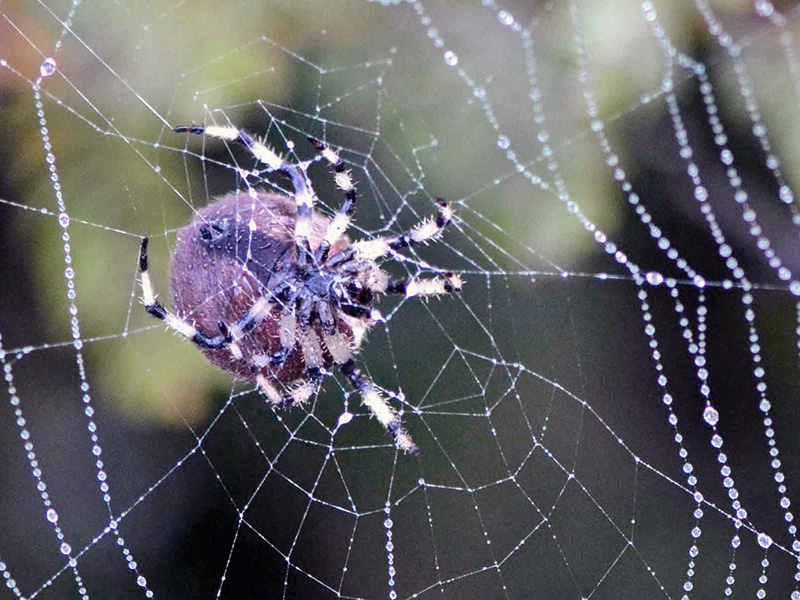
For years I had noticed spiders in our yard, taking occasional pictures, and even watched them for a few days. I’ve discovered how fascinating they can be.
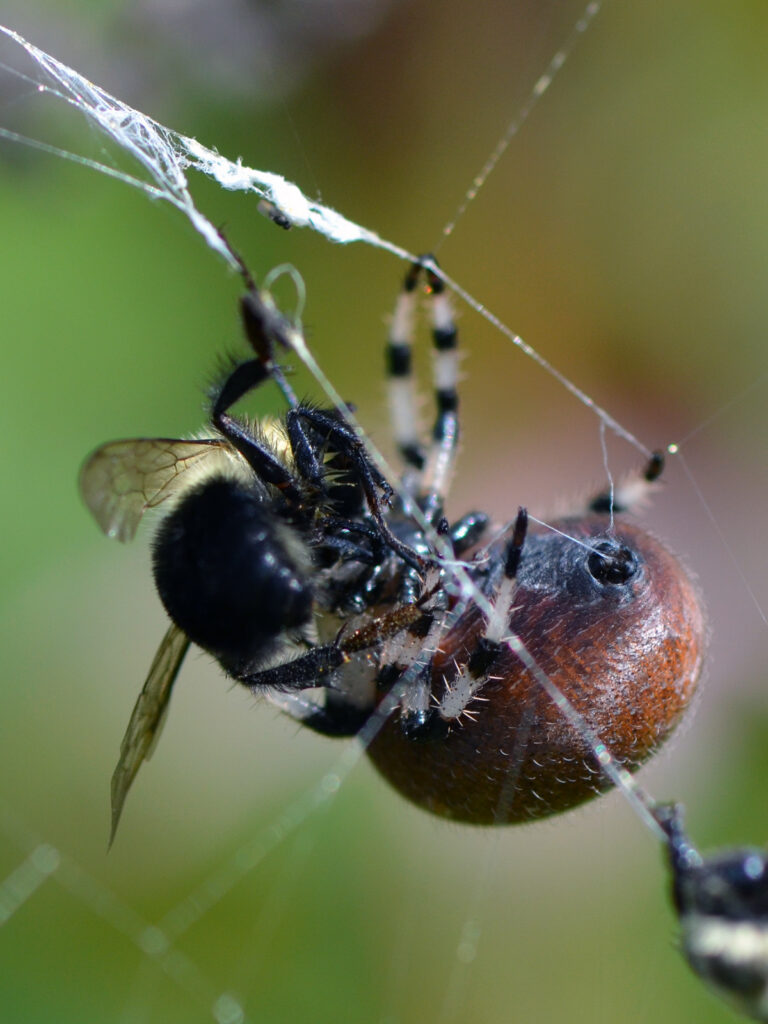
We enjoyed watching this shamrock orbweaver spider spinning silk threads to complete the capture of the bee.
It was fascinating to watch as one of its legs guided the silk as it emerged from its spinneret.
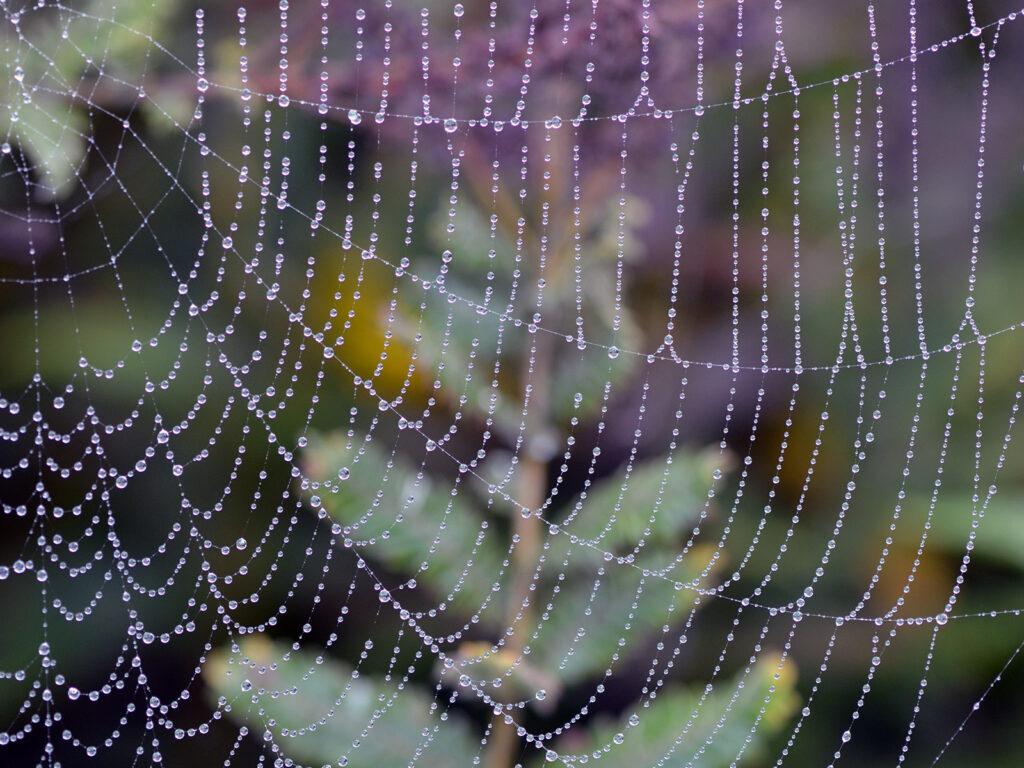
It stayed in the same area for a few weeks, and we enjoyed seeing the newly-repaired web each morning as well as the little insects that fell into the web, soon to be wrapped up for eating later.
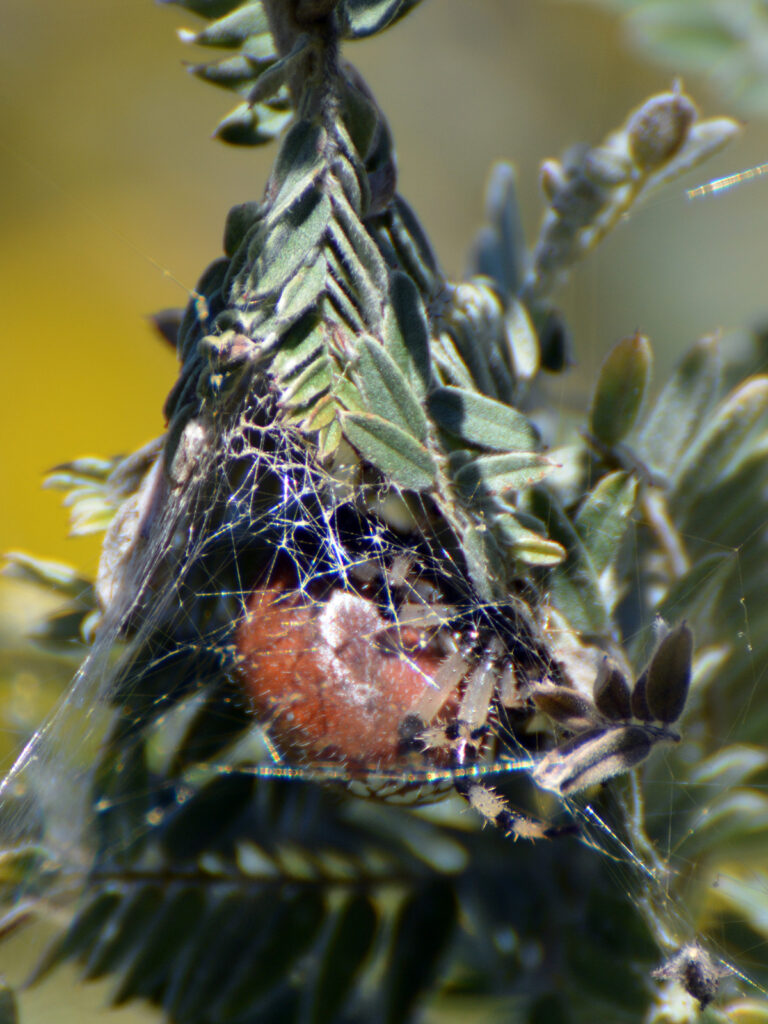
The spider chose a good spot for it — right in the middle of our meadow where there’s lots of different kinds of bees hovering around the various nectar plants.
The spider spent most of its time in its home, a little tent it constructed in a plant. It spent weeks there.
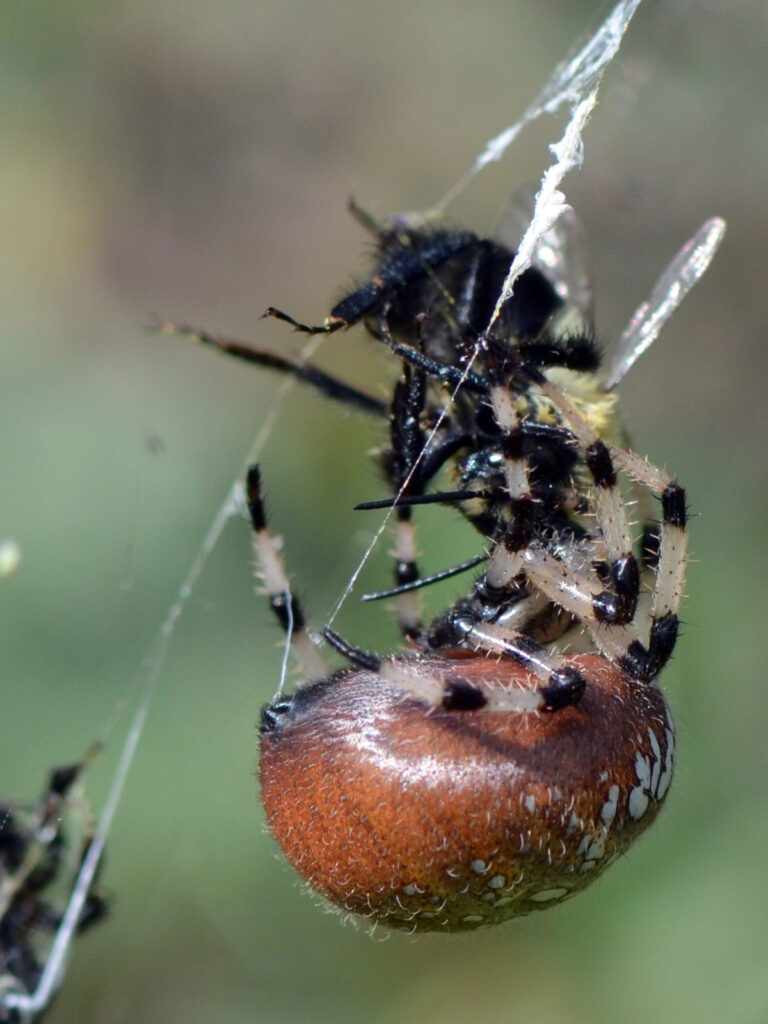
Although we love our bumble bees, the spider has to eat, too. And this particular bumble bee was in its final days since it was fall and soon all but the queens would die.
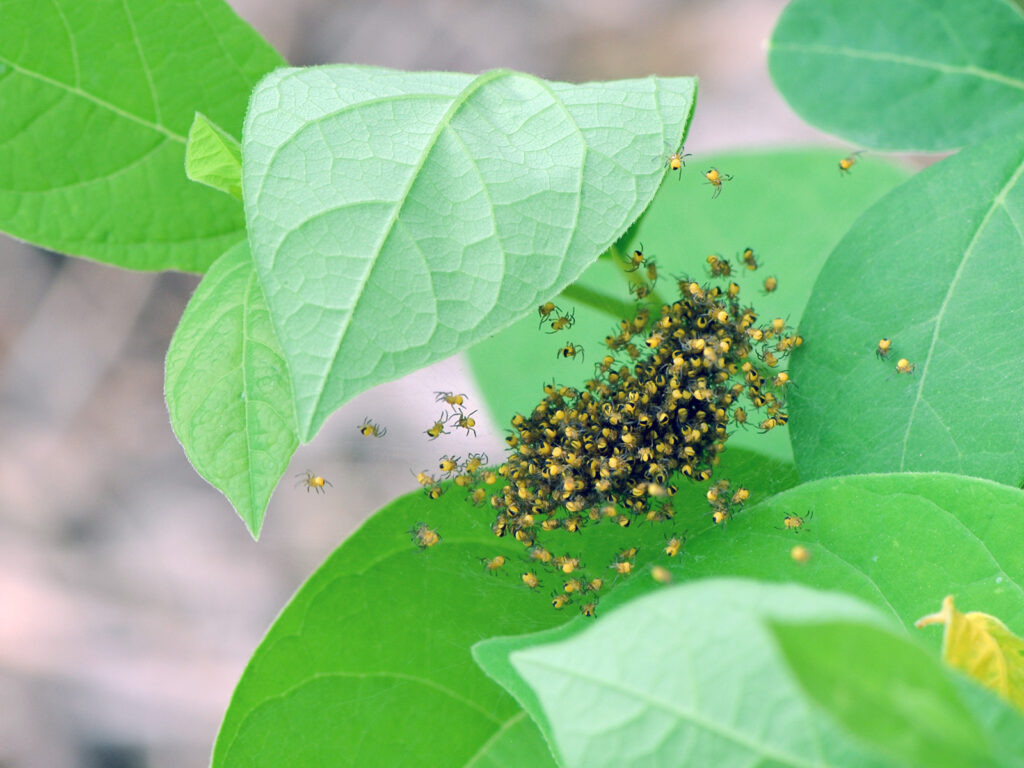
One day we saw a hatching of a group of baby spiders on our spice bushes! I’m sure many ended up as food, but I hope many found good homes in our yard.
Here are some of the spiders we’ve seen in our yard.
In the house, too!
Cellar spider (Pholcus sp. maybe Pholcidae)
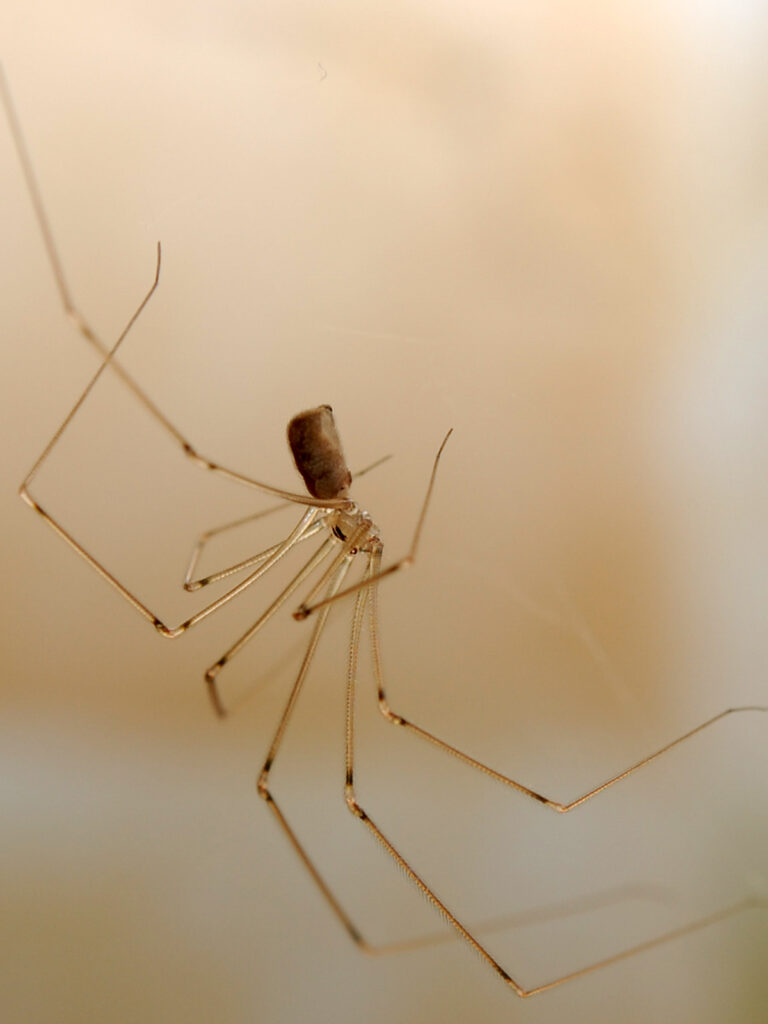
Although the common name for this spider seems to be “cellar spider,” this one (and a few friends) lives in the area below our kitchen windowsill and in and around the sink area. It has never bothered anything and seems to stay in this general area. It’s just about a half inch long and is very delicately built. What does it eat? Fruit flies or other little insects — even stink bugs!
I have to admit that I catch more fearsome-looking spiders in a jar and toss them out into the great outdoors, but I enjoy having small representatives of the insect kingdom as my kitchen companions or in other parts of the house. I don’t know how old this particular spider is or this species’ life expectancy, but its ancestors have lived in this same “habitat” for years and feel almost like part of the family. (See Resources below for more info on spiders in the home.)
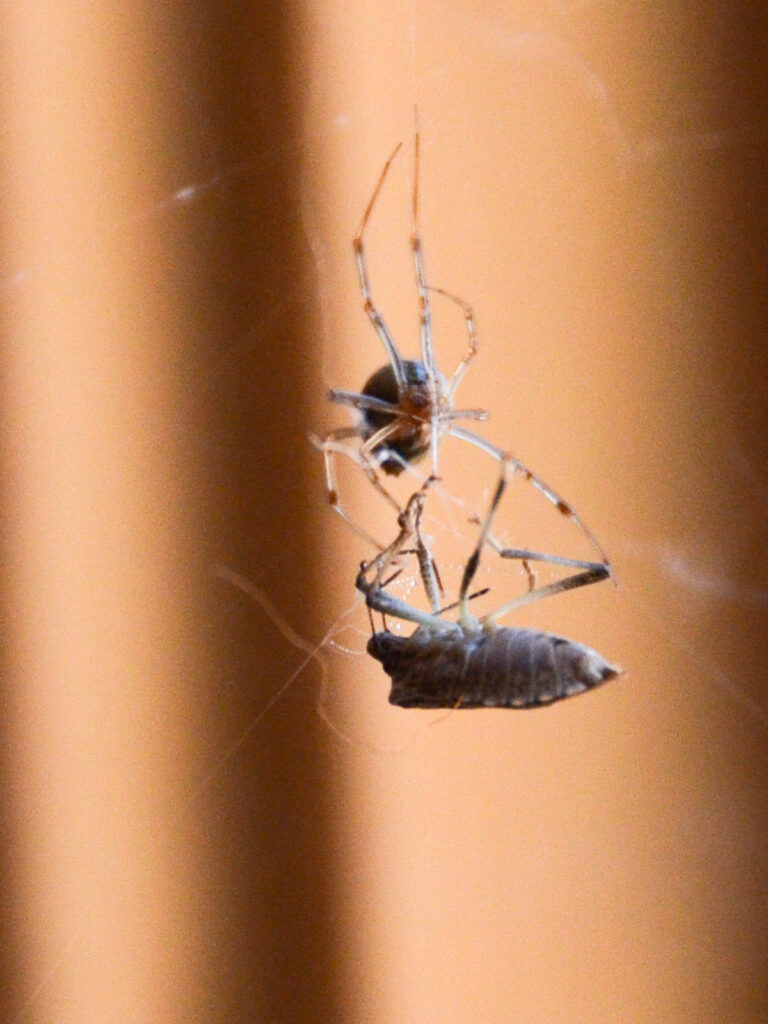
This spider is helping us deal with a stinkbug in North Carolina, where there is an ample supply of stinkbugs.
Resources
- Washington Post:
- Don’t kill that spider in your house It’s unlikely to bite you and is good for the environment
- The Conversation:
- BugGuide.net:
- BugGuide – identification of spiders, but also information on anatomy, food, life cycle etc.
- Saving Birds Thru Habitat:
- Buckeye Yard and Garden Online:
- Kerry’s Nature.org:
- Blog – An ecologist who has many posts about spiders!
- World Wildlife Foundation:
- Australian peacock spider goes viral – All spiders are useful, but some are beautiful, too!
- Michigan State Univ.: On the Northen Black Widow Spider (likely the only “dangerous” one relevant to Central New York): Surprisingly, as common as this spider is, black widow bites are infrequent because the spider is actually very timid and prefers fleeing when disturbed.
- YouTube:
- VIDEO: Shamrock Orb Weaver Spider – reconstructing its web after a rainstorm
- Family Handyman:
- Here’s why you should never kill a house centipede
- Learn more about spiders in general:
- Science Friday:
Reflections
Believe it or not, almost all species are not harmful to people, but are actually beneficial because they catch and eat a lot of insects that can be pests. Spiders do not seek out, chase, or randomly attack people, nor do they carry grudges against people. If you leave them alone, they will leave you alone. Most people are bitten because they were playing with the spider (which is effectively “asking” to be bitten), or the spider felt threatened without a chance to escape; many times, surprising the spider was completely accidental. Depending on your geographical location, there are only a few spiders that you need to be familiar/concerned with…
~ BugGuide
The love for all living creatures is the most noble attribute of man.
~ Charles Darwin (1809-1882)
